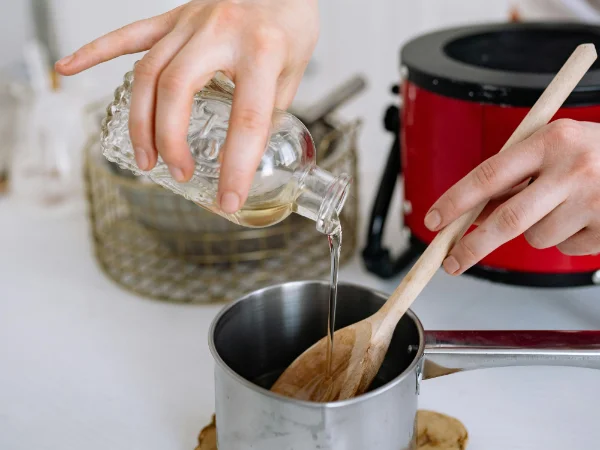Wax melts have become a staple in the home fragrance industry, offering consumers an easy way to enjoy rich, long-lasting scents without the need for an open flame. If you’re a start-up entrepreneur in the home fragrance industry, learning how to create high-quality wax melts is an excellent way to establish your brand, differentiate yourself from competitors, and generate revenue.
This guide will walk you through the seven essential steps for making professional wax melts while also covering cost considerations, supplier sourcing, branding strategies, and profit margins—everything you need to turn this craft into a successful business.
Why Wax Melts Are a Smart Business Choice
- Lower start-up costs compared to traditional candles.
- High profit margins when produced in bulk.
- Endless customization options to create signature fragrances.
- Eco-friendly and sustainable branding opportunities that appeal to modern consumers.
Essential Supplies and Equipment
To begin, you’ll need:
✔ Wax – Soy, paraffin, or beeswax.
✔ Fragrance Oils – Designer-inspired scents for premium branding.
✔ Dye & Additives – Optional, for colour and texture enhancements.
✔ Moulds – Silicone or plastic trays for shaping.
✔ Wax Melter or Double Boiler – To safely melt wax to the correct temperature.
Step 1: Choosing the Right Wax for Your Melts
Selecting the right wax is crucial for performance, scent throw, and branding.
Popular Wax Types:
- Soy Wax – Eco-friendly, excellent scent throw, and popular with conscious consumers.
- Paraffin Wax – Strong fragrance retention, but less environmentally friendly.
- Beeswax – Natural alternative, but comes at a premium cost.
Business Tip:
✔ Buying wax in bulk reduces costs significantly—source wholesale suppliers to keep expenses low.
Step 2: Selecting High-Quality Fragrance Oils
Your fragrance oils define your brand, so choosing strong, lasting scents that appeal to your target market is essential.
Fragrance Oil Selection Strategies:
- Use high-quality fragrance oils with excellent scent retention.
- Consider designer-inspired blends (e.g., mandarin & bergamot, aftershave-inspired scents).
- Aim for long-lasting scent throw—some oils require stabilizers for optimal results.
Business Tip:
✔ Partner with trusted fragrance suppliers to maintain quality consistency for repeat customers.
Step 3: Melting the Wax Properly
Proper temperature control ensures smooth, professional-quality melts.
Melting Best Practices:
- Double boiler method prevents wax from burning.
- Avoid overheating—ideal temperature for soy wax is 80-85°C (176-185°F).
- Stir gently for consistent texture.
Business Tip:
✔ Investing in professional wax melters can streamline production for bulk orders.
Step 4: Mixing Fragrance Oils for Maximum Scent Throw
To achieve a strong, long-lasting scent, fragrance oils must be blended correctly.
Key Mixing Considerations:
- Ideal temperature for adding fragrance: 70-75°C (158-167°F)—ensures even blending.
- Recommended fragrance load: 6-10% of total wax weight for best results.
- Stir thoroughly to avoid uneven distribution.
Business Tip:
✔ Test different scent loads to find the balance between strong scent throw and cost efficiency.
Step 5: Pouring Wax into Moulds for Professional Results
Professional moulds elevate product presentation.
Moulding Techniques:
- Pour slowly to prevent bubbles.
- Choose moulds that align with branding (e.g., unique shapes for premium identity).
- Consider custom logo moulds for brand recognition.
Business Tip:
✔ Bulk mould orders reduce cost per unit—find wholesale suppliers with competitive pricing.
Step 6: Setting and Curing Your Wax Melts
Proper curing ensures maximum fragrance strength.
Curing Guide:
- Allow wax melts to cool at room temperature for 24 hours.
- Cure for 7-14 days to optimise fragrance throw.
- Store in airtight containers to maintain freshness.
Business Tip:
✔ Pre-cured wax melts can be a unique selling point—offer pre-cured melts for stronger scent throw.
Step 7: Packaging and Branding Your Wax Melts for Business Success
First impressions matter—branding is crucial to success.
Packaging Strategies:
- Luxury-style packaging for premium appeal.
- Use eco-friendly materials for sustainability-conscious customers.
- Custom labels with scent descriptions boost sales.
Business Tip:
✔ Strong branding builds customer loyalty—invest in high-quality packaging suppliers.
Business Insights: Costs, Suppliers, and Profitability
Launching a wax melt business involves upfront costs but yields high profit margins when scaled efficiently.
Start-up Costs:
| Expense | Estimated Cost |
| Wax (bulk supply) | £100-£300 |
| Fragrance Oils | £150-£500 |
| Moulds & Equipment | £50-£250 |
| Packaging | £100-£400 |
| Branding & Labels | £75-£300 |
Finding Reliable Suppliers
✔ Use wholesale suppliers to reduce costs.
✔ Compare prices across multiple vendors for the best deals.
✔ Prioritize quality over cost—cheap materials can harm brand reputation.
Conclusion
You now have a step-by-step blueprint for creating professional-quality wax melts while also managing business essentials like cost efficiency, supplier selection, branding, and profitability.
✔ Test different fragrance blends to create a unique brand identity.
✔ Focus on quality packaging to attract high-end customers.
✔ Scale strategically—bulk production increases profit margins. By following these steps, you can transform wax melts into a thriving home fragrance business.


Leave a Reply